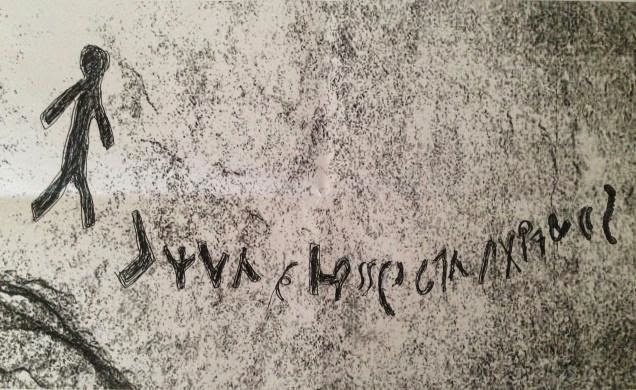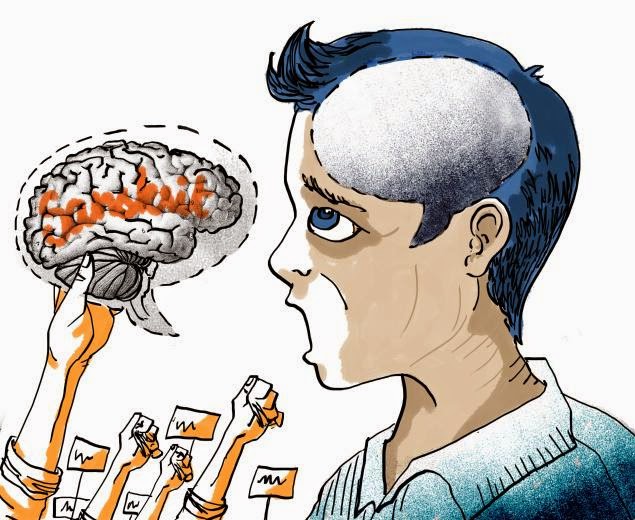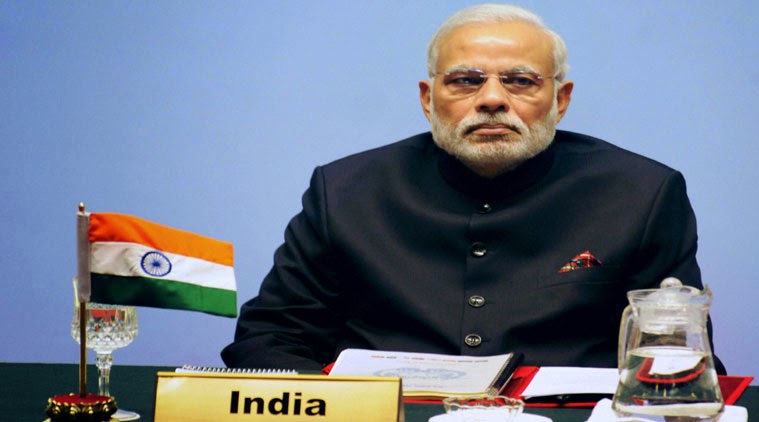The need of the hour is to save the Indian liberalism from its Left-liberal elite.
POLITICS | Long-form | 05-12-2014
Shekhar Gupta @ShekharGupta
National interest
By the time this week's India Today hits the stands, one thing would have become clearer: whether Narendra Modi is essentially an old-style politician under an extroverted modern gloss or a game changer. Because an old-timer would be a partisan to the core, defending the indefensible to the very logical end, that is, the loss of an argument and some political capital. If he is an original new phenomenon, one of a kind, or sui generis as the more scholarly people prefer to say (my venerable first news editor, late DN Singh, had banned the use of "foreign" words), he would have fired Sadhvi Niranjan Jyoti. Earlier she is sent back to prayer and penance, rather than waste public money in the ministry of food processing, making a pickle of the BJP's image, the better it will be.
But really? Think again, and think hard. Do we, the currently besieged and cornered minority of Indian liberals, even want the story to end that way, and this soon? Do we want it to end at all? A sadhvi in the BJP ministry, even if a junior minister in charge of achar and chutney, while I presume her senior, Harsimrat Kaur of the Akali Dal, takes care of jams and juices, brings such solace to us liberals. It is living proof that we are intellectually right and morally superior. And most importantly, that we are losing. Poor us. Is there any future left for the Indian liberal with the rise of Narendra Modi? Why isn't the rest of the world feeling sorry for us? How can we, such a small, brave but increasingly disenfranchised community of liberals, be expected to rectify the consequence of the stupidity of crores of voters? The future is lost, a mythical past is upon us, the barbarians are at the gates. Where is my ticket to a genuinely liberal American East Coast campus or think tank?
Even for a bout of self-flagellation, this sounds harsh. If Modi lacks the political wisdom to cut his losses early enough, it is his problem and not that of his critics. In fact, the longer he perpetuates this, the more the Indian Left-liberal, will say, I told you so. From Niranjan Jyoti to Adityanath, the new saffron-robes are welcome evidence of all our warnings gone unheeded. Just as Sadhvi Rithambhara and Ashok Singhal were in the early 1990s, and Praveen Togadia and Pramod Muthalik of Sri Ram Sene in the interregnum. It would be such disappointment if Modi did the right thing now and sent Sadhvi Jyoti home. He can't deny us this living, walking and talking evidence for our unheeded warnings.
Credit must be given where it's duly deserved. In this case to American liberal academic Steve Almond, whose June 8, 2012 article ("Liberals are ruining America, I know because I am one") in the New York Times triggered this week's central thought of liberal masochism, self-isolation, mourning or, in the more apt Indian usage, rona-dhona, or even better, in Punjabi, syapa. Almond talked of how he briefly acquired liberal martyrdom in 2006 by resigning his teaching job at Boston College to protest the selection of then secretary of state Condoleezza Rice as commencement speaker. His biggest reward, he said, was an invitation to appear on an abusive Right-wing chat show on Fox News, and he thought then that he had paid his liberal dues by standing up to sour-mouthed, shouty anchor Sean Hannity. By 2012, he said, he saw that action as less heroic. "I hadn't spoken truth to power or caused anyone to reassess secretary Rice's record. I merely provided a few minutes of gladiatorial stimulation for Fox News. In seeking to assert my moral superiority, I enabled Hannity."
If you recall 2012 America, the Right-Left polarisation cut across American society. But in 2014, six months into Modi's reign, India sounds quite similar. Almond's self-diagnosis seems to fit us too now: "This, to be blunt, is the tragic flaw of the American liberal," he said. "We choose to see ourselves as innocent victims of an escalating Right-wing fanaticism. But too often we serve as willing accomplices... and to the resulting degradation of our civic discourse." Then, turning the sword into his own belly he said: "We do this, without even meaning to, by consuming conservative folly as mass entertainment."
It is challenging for me to delve deeper into the marginalisation of the liberal in western democracies because I do not know those societies enough. But in India, the issue is compounded by the deeprooted, terminal elitism of the liberal. I have fretted for years that politically our liberal constituency is shrinking because it had become, post-independence, hyphenated with the word Left. Our national ideology emerged from the freedom movement, which was very liberal. The Congress then was a political umbrella wide enough to give room to liberals of the Left as well as the Right, and also intellectual space for them to argue. Remember, Syama Prasad Mookerjee was even a member of Nehru's cabinet, and Sardar Patel his deputy. But over the next two decades, the right was purged, artfully by Nehru and then crudely by his daughter. India's only truly liberal party therefore morphed into a Left-liberal party. You need to read Ramachandra Guha to learn more about it. But people of my generation do remember the "star" symbol of C Rajagopalachari's Swatantra Party, where much of the old Congress right collected and which once was a formidable opposition force, netting 44 Lok Sabha seats in 1967. Indira Gandhi destroyed it, and thereby India's liberal right, with her post-1969 "revolutionary" push.
This reduced liberalism to a Left monopoly as the right merged into saffron. It lasted as long as Indian politics and popular mind were dominated by old, anti-imperialist, non-aligned, West-phobic ideas of the Cold War. But it did not have the flexibility to change with new realities as the Cold War ended, global power and economic equations were rewritten and successive generations of aspirational, ambitious, impatient and post-ideological Indians rose. I am not sure Dr Manmohan Singh quite looked at it this way, but post-1991, he was probably the only famous liberal of old who thought it was time to delete the hyphenated left. By the middle of 2009, with a bigger second mandate, he was winning this campaign of ideological correction. But he was defeated by the party's embedded pinko immune system.
Pop sociology has its hazards, but I have got away with it often enough in the past, so here we go again. While Singh had the intellectual honesty to acknowledge, or to borrow the words of his political mentor Narasimha Rao, do "what to do when the ground under your feet is moving", he failed to see the very formidable elitism underpinning this left-liberalism. To be liberal, you had to be left, and to be left-liberal, your parents should have done very well, given you Doon-Stephen's-Oxbridge education, a Delhi Golf Club membership and definitely a home in the capital's Little Kremlins, Diplomatic Enclave and couple more neighbourhoods to its immediate south, in bequest. Singh and Rao didn't check out on this, and failed. That is why the liberals are back in their lefty, but also elitist, hole, or rather their ivory bunker. Why bunker, not tower, we will just get to.
It is now an uch-koti (superior) brahminical club (I use that purely in its intellectual manifestation, not a Manuwadi one). "Outsiders" are rejected. And so what if its ranks continue to shrink. A reminder was served on me very recently in a very exhaustive profile of me in a self-avowedly liberal publication that traced my apparent success over four decades and marvelled that I could get here despite being the son of a "minor bureaucrat from Haryana" and "lacking the eloquence" of my Oxbridge peers. Now, the second is a fact, but the first an exaggeration. My late father, in fact, would have been quite flattered to be described as a minor bureaucrat. He slogged all his life to rise to become one, a gazetted officer, even if a day before his retirement, so he would also have the "power" to attest somebody's certificates. He was mostly a clerk, or rather an assistant, despite his relatively high education. He struggled with money, with his tiny salary sent his children mostly to sarkari Hindi medium schools and colleges, but still made sure we bought two English and Hindi newspapers, three magazines and listened to cricket commentary on BBC regularly in English.
I say all this not to praise him, or to write belatedly an obit he was not famous, powerful or rich enough to deserve when he passed away in 1998, but to provide the sociological point of this week's National Interest.
I say this because I now believe that my parents' generation (my father would have been 85 today) was not atypical of post-independence liberal Indians, mostly Congress voters, who were willing to challenge earlier acceptance of elite domination with "Bhagwan teri maya, kahin dhoop kahin chhaya" resignation. They believed early enough that education would bring equality. Economic reform brought opportunity and then suddenly, it was no longer so life-and-death, that your parents should have done very well for you to be taken seriously. That is the reality India's elite liberals have failed to understand or embrace. In defining liberalism as an exclusive "brahminical" value of the intellectual, economic and academic upper crust, they have closed their doors to the enormously more numerous rest, as our ancestors had shut them out of Sanskrit scholarship and even science. If Mahabharata is a reality, so is the legend of Eklavya.
One of the most stirring speeches in defence of Indian secularism was once made by Ram Vilas Paswan when Vajpayee's short-lived government was seeking a confidence vote. How many Muslims came with Babur, he asked, and then answered, only 40. So how did they swell to crores? Because "people like us", he said, Dalits and lower castes, were not allowed entry in the temples, "so we went to the mosques". This is precisely what today's liberal elites have done to the tens of crores of rising, aspirational, we-don't-owe-nobody-nothing Indians, children of poorer parents like mine who beg, steal, borrow, scrounge, starve, deny themselves that pack of cigarettes to give them opportunity, if not houses in Shanti Niketan or Kautilya Marg or Golf Club memberships. Instead, Modi has embraced them and now enjoys power that no Indian prime minister has since Indira in 1971. They are now coming, smashing the defences of the elite liberal ivory, well, bunker.







